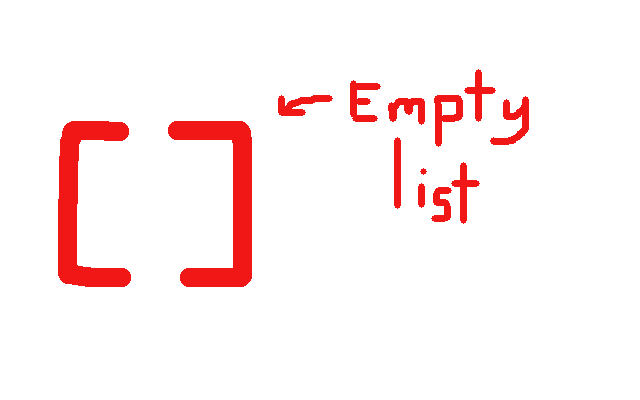Python - Lists
Python has a data structure called lists. They are extremely useful for manipulating data and the data type comes with methods that make it easy for you to do complex operations. The syntax used to represent lists in python are brackets. The example below would represent a list containing 3 elements of 1, 2 and 3.
[1, 2, 3]
So lets dive into the actual code where we make a very useful program which will tell us the probability of obtaining a sum given two dice. So lets say we want to know the probability of getting a sum of 8 with 2 dice well we can do that in python using lists.

Some of the methods we are going to use include sorted, append, reverse, values and Counter which is being imported from collections. The way to think of lists in Python as one of my computer science friend nicely put it is putting stuff into a container.
#!/usr/bin/env python
import sys, os, math
from collections import Counter
def display_possibilities(outcomes): # This does all the printing.
possibility = Counter(outcomes) # Contains the number of possible outcomes for each outcome.
total_outcomes = 0 # This will become 36 once all of the outcomes are added.
for i in possibility.values(): # adding up all of the number of possible outcomes for each outcome.
total_outcomes += i
print("Total Possibilities:", total_outcomes, "\n")
print("Sum: Percentage: Out of", total_outcomes, ":", sep='') # The sep='' just removes whitespace don't let that confuse you.
for i in sorted(Counter(outcomes)):
print(i, " ", round(((possibility[i]/float(total_outcomes)) * 100), 3), "% ", possibility[i])
def main():
highest_roll = 7 # The highest value that the dice roll can have. It is 7 because range(1,7) will
lowest_roll = 1 # The lowest value the dice can roll.
possible_outcomes = [] # this is an empty list
sum_of_outcomes = []
d = [[x] for x in range(lowest_roll ,highest_roll)] # Creates a list of possible values for a dice roll.
rd = [[x] for x in reversed(range(lowest_roll, highest_roll))] # Reverses the list of possible values.
for x in d: # A for loop for putting both lists together creating a list of possible values for both dice rolls.
for i in rd:
possible_outcomes.append(x+i)
for result in possible_outcomes: # Adds the sum of the dice rolls.
sum_of_outcomes.append(result[0]+result[1])
print(sum_of_outcomes, "\n")
display_possibilities(sum_of_outcomes) # Calls the function to print everything.
if __name__=="__main__":
main()
The result of running the code:
[7, 6, 5, 4, 3, 2, 8, 7, 6, 5, 4, 3, 9, 8, 7, 6, 5, 4, 10, 9, 8, 7, 6, 5, 11, 10, 9, 8, 7, 6, 12, 11, 10,
9, 8, 7]
Total Possibilities: 36
Sum: Percentage: Out of36:
2 2.778 % 1
3 5.556 % 2
4 8.333 % 3
5 11.111 % 4
6 13.889 % 5
7 16.667 % 6
8 13.889 % 5
9 11.111 % 4
10 8.333 % 3
11 5.556 % 2
12 2.778 % 1
highest_roll = 7 # The highest value that the dice roll can have. It is 7 because range(1,7) will
lowest_roll = 1 # The lowest value the dice can roll.
possible_outcomes = [] # this is an empty list
sum_of_outcomes = []
This first part of the main function is setting up all the variables. The highest and lowest roll will go into the range function which will than generate a list. Range is a rather useful function to generate lists and than do manipulations on the list generated by range. Both possibleoutcomes and sumof__outcomes are variables holding empty lists waiting to be filled.
d = [[x] for x in range(lowest_roll ,highest_roll)] # Creates a list of possible values for a dice roll.
rd = [[x] for x in reversed(range(lowest_roll, highest_roll))] # Reverses the list of possible values.
for x in d: # A for loop for putting both lists together creating a list of possible values for both dice rolls.
for i in rd:
possible_outcomes.append(x+i)
for result in possible_outcomes: # Adds the sum of the dice rolls.
sum_of_outcomes.append(result[0]+result[1])
display_possibilities(sum_of_outcomes) # Calls the function to print everything.
possibility = Counter(outcomes) # Contains the number of possible outcomes for each outcome.
total_outcomes = 0 # This will become 36 once all of the outcomes are added.
for i in possibility.values(): # adding up all of the number of possible outcomes for each outcome.
total_outcomes += i
for i in sorted(Counter(outcomes)):
print(i, " ", round(((possibility[i]/float(total_outcomes)) * 100), 3), "% ", possibility[i])
Thats about it and now you can make lists and make all kinds of dice rolling games and statistics.